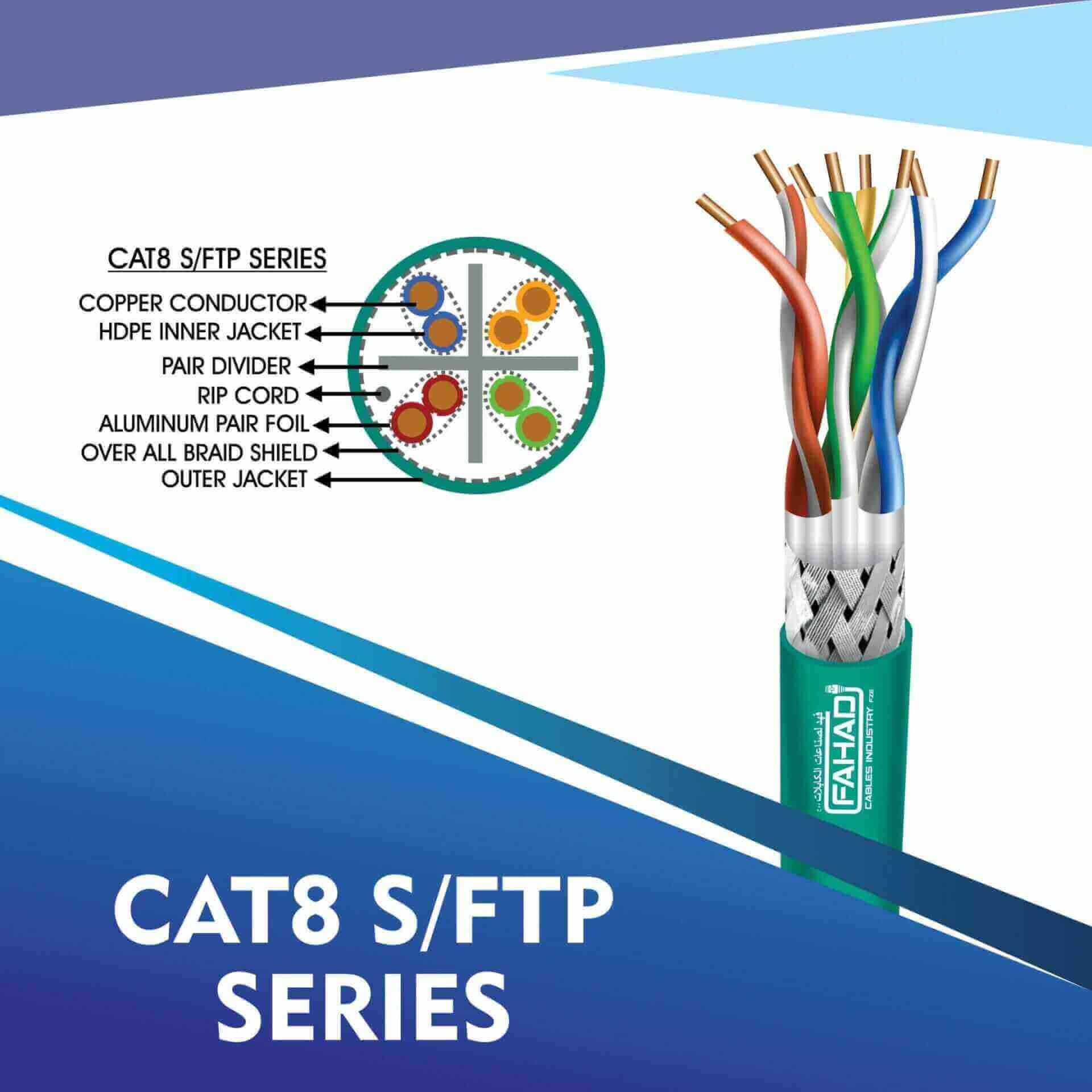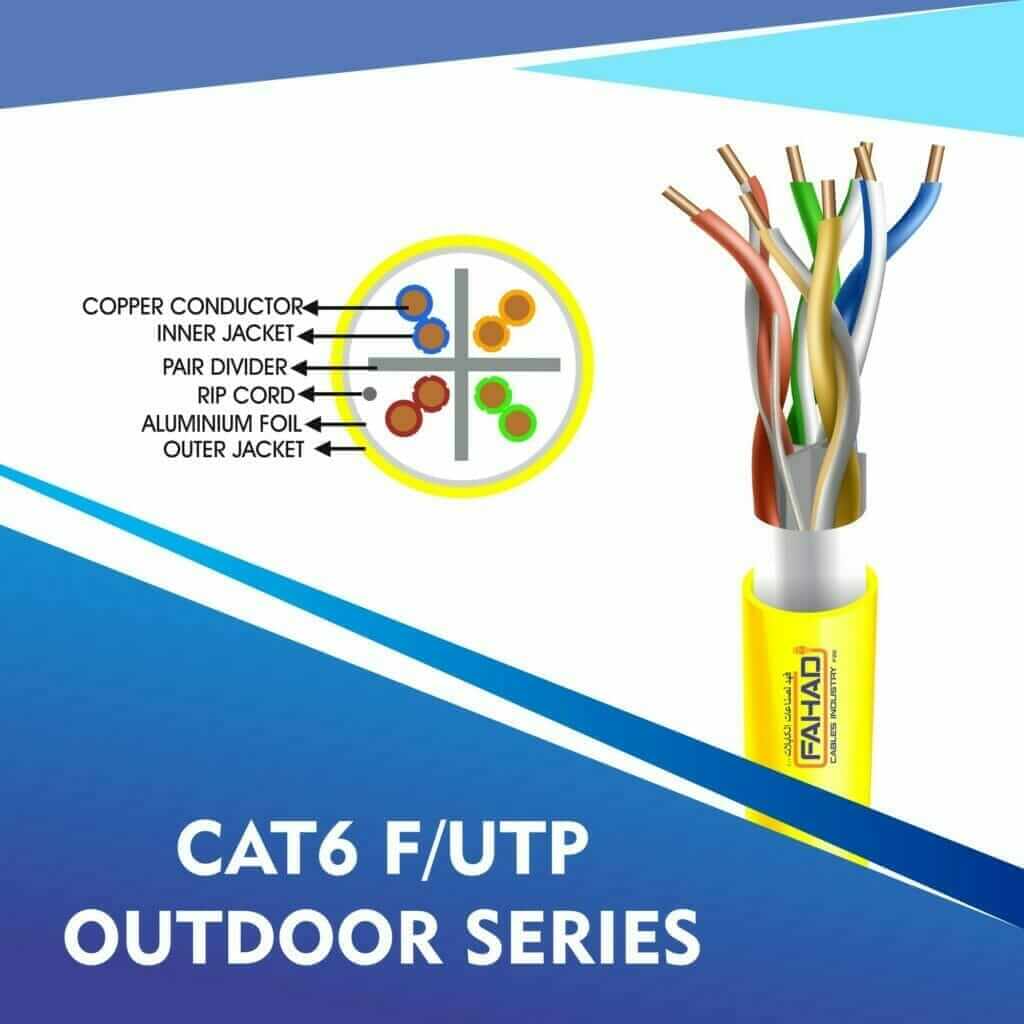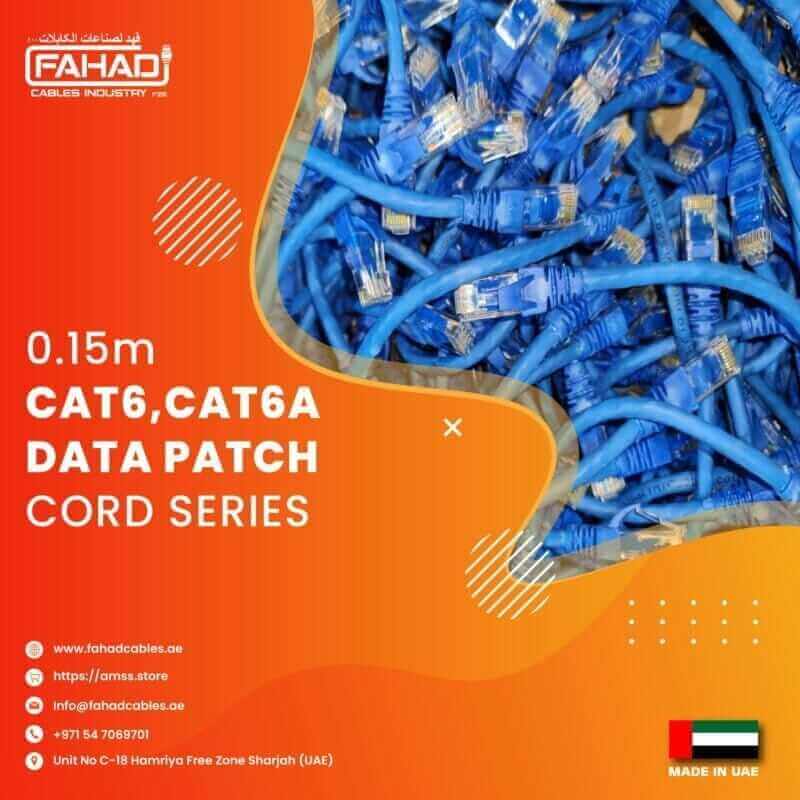- Network Cables
- Control automation Cables
- Data Patch Cord
- fiber optic cable
- Fiber Patch cord Multimode
- Fiber Patch cord Single Mode
- Fiber Pigtails Series
- Coaxial Cables
- security cable wire
- alarm cable
- speaker cables
cat6 23awg sftp ethernet solid cables fahad cables industry uae

Understanding Cat6 23AWG S/FTP Ethernet Solid Cables by Fahad Cables Industry FZE
Introduction to Cat6 Ethernet Cables
Cat6 Ethernet cables represent a significant advancement in network cabling technology, designed to support high-speed data transmission. The Category 6 standard cat6 sftp was cable cat6 sftp introduced to accommodate the increasing demand for faster internet connections and improved bandwidth capabilities. Specifically, Cat6 cables are capable of transmitting data at speeds of up to 10 Gbps over a distance of 55 meters, making them suitable for modern networking needs, including streaming high-definition media and gaming.
One of the primary differences between Cat6 cables and their predecessors, such as Cat5 and Cat5e, lies in their enhanced performance specifications. While Cat5 supports cat6 sftp data transmission speeds of up to 100 Mbps and Cat5e offers improvements to 1 Gbps, Cat6 significantly outperforms both by providing the capability to handle 10 Gbps. Furthermore, Cat6 cables feature a higher frequency of 250 MHz compared to the 100 MHz of Cat5e, allowing them to support more extensive data transfer requirements and reduce crosstalk, which can interfere with signal quality. کابل cat6 sftp cat 6 wire diameter what gauge is cat6 cat 6 sftp sftp lan cable solid cables
The physical structure of Cat6 Ethernet is another critical factor that contributes to its superior performance. Many Cat6 cables utilize solid core conductors, which provide lower attenuation and better overall signal quality than the stranded cables found in lower categories. Additionally, Cat6 23AWG S/FTP Ethernet Solid Cables some Cat6 cables, especially those designed as S/FTP (Shielded Foiled Twisted Pair), incorporate shielding that further protects against electromagnetic interference, making them ideal for deployment in environments with significant electronic noise.
Selecting the right Ethernet cable for a specific network infrastructure is essential. The choice between Cat6 and its predecessors will greatly depend on the required speed, distance, and specific application. When planning for a network upgrade or installation, considering these factors ensures optimal performance and longevity of the system.
Overview of 23AWG Wire Gauge
American Wire Gauge (AWG) is a standardized wire gauge system that denotes the diameter of electrical wires, which is particularly crucial in networking applications, such as the Cat6 23AWG S/FTP Ethernet solid cables manufactured by Fahad Cables Industry FZE. The “23” in 23AWG signifies the wire’s diameter, with smaller numbers indicating thicker wires. Wire gauge plays a significant role in determining the electrical resistance and performance of networking cables.
The 23AWG specification is important for various reasons. For instance, a smaller gauge number generally translates into lower resistance, which is beneficial for maintaining high signal quality over longer distances. In Ethernet cables, lower resistance contributes to minimized signal loss and enhanced Cat6 23AWG S/FTP Ethernet Solid Cables data transmission rates, making 23AWG an optimal choice for environments requiring fast, reliable network connections. This wire gauge is capable of supporting high-speed networks up to 10 Gigabit Ethernet, making it suitable for modern applications where bandwidth demands are considerable.





Flexibility is another aspect where 23AWG wire gauge provides advantages. Due to its relatively larger diameter compared to higher gauge counterparts, 23AWG cables offer greater durability and can withstand physical stresses better, reducing the risk of damage during installation and use. Additionally, the robustness of the 23AWG wires allows them to maintain their integrity in challenging conditions, ensuring long-term operational reliability within various networking setups.
Furthermore, when selecting the appropriate cabling for specific applications, one must consider factors such as installation environment and expected data load. The choice of 23AWG wire not only affirms performance based on resistance and signal quality but also reflects a commitment to ensuring future-proof installations that can support advancements in technology. Overall, 23AWG wire gauge embodies a balanced solution for modern network infrastructure needs.
The Importance of Shielded Foiled Twisted Pair (S/FTP) Design
The S/FTP (Shielded Foiled Twisted Pair) design in Cat6 23AWG Ethernet cables provides significant advantages that enhance performance and reliability in network communications. A fundamental characteristic of S/FTP cables is their design, which incorporates individual shielding around each pair of wires, as well as an additional layer of overall shielding. This two-tier approach is particularly effective at minimizing electromagnetic interference (EMI) and alien crosstalk, which are common issues in high-density cabling environments.
One primary advantage of S/FTP cables is their superior ability to maintain signal integrity. The shielding not only protects against signal degradation caused by external interference but also ensures that data transmission remains consistent and reliable even in environments filled with electronic devices. This is especially critical in modern applications where data bursts occur frequently, and any disruption can lead to data loss or degraded performance.
Comparatively, the S/FTP design offers more robust protection against interference than other shielding options, such as unshielded twisted pair (UTP) cables, which lack any shielding, and foil twisted pair (F/UTP) cables, which only provide shielding to the overall cable without individual pair shielding. While UTP cables may suffice for smaller networks or less noise-prone environments, they are not ideal for installations requiring high performance, such as data centers or areas with substantial electronic interference. F/UTP can mitigate some crosstalk but does not provide the same level of protection as S/FTP due to the absence of individual pair shielding.
In high-density cabling systems, where numerous cables run closely together, the S/FTP design proves invaluable. By keeping interference at bay and improving crosstalk performance, these cables ensure that high-speed data transfer remains uninterrupted, making them a suitable choice for demanding networking applications.
Fahad Cables Industry FZE: Company Overview
Fahad Cables Industry FZE is a leading manufacturer within the cable production sector, specializing in high-performance networking solutions. Established with a vision to cater to the evolving demands of the telecommunications and networking industries, the company has carved out a prominent position in the global market. Since its inception, Fahad Cables has focused on delivering superior quality products while adhering to international standards, ensuring that customers receive the most reliable components for their networking needs.
The mission of Fahad Cables Industry FZE is to provide innovative and robust cable solutions that guarantee optimal performance. The company prioritizes research and development to stay ahead in a competitive environment, continuously improving its product offerings. By investing in cutting-sftp network cable edge technology and skilled professionals, Fahad Cables has managed to create a diverse range of products including the Cat6 23AWG S/FTP Ethernet Solid Cables, which are designed for high-speed data transmission and enhanced network reliability.
Fahad Cables’ commitment to quality is unwavering, and the organization implements rigorous testing protocols throughout the manufacturing process. This diligence ensures that all cables not only meet but often exceed industry standards. As the demand for advanced networking solutions continues to rise, Fahad Cables Industry FZE remains steadfast in its dedication to supplying the market with products that enhance connectivity and performance. The company’s position as a trusted player in the cable manufacturing landscape underscores its role in supporting businesses and consumers alike in their networking endeavors.
Manufacturing Process of Cat6 Cables at Fahad Cables
The manufacturing process of Cat6 23AWG S/FTP Ethernet cables at Fahad Cables involves a meticulous approach to ensure the highest quality and reliability of the final product. The production starts with the selection of raw materials, primarily high-grade copper for the conductors, which is essential for optimal signal transmission. The 23AWG designation refers to the wire gauge, indicating that the conductors are sufficiently thick to minimize resistance and enhance performance, making them suitable for high-speed networking applications.
In addition to copper conductors, Fahad Cables employs specialized insulation materials that provide thermal and electrical insulation, contributing to the cables’ overall efficiency. The cables are designed with a foil shielding mechanism that protects against electromagnetic interference (EMI), which is crucial for maintaining the integrity of the data being transmitted. This shielding is a defining characteristic of the S/FTP (Shielded Foiled Twisted Pair) configuration, reducing potential disruptions from external sources.
Once the materials are sourced, they undergo an advanced production process that includes twisting, shielding, and insulation. The twisted pairs are tightly wound to effectively mitigate crosstalk, where signals in one cable may interfere with those in another. Following the twisting process, the shielding is applied, ensuring each pair is adequately protected. Quality control measures are integrated at every stage of production, involving rigorous testing to assess electrical performance, signal loss, and adherence to industry specifications.sftp cable full form sftp cat6
Fahad Cables maintains compliance with international standards, ensuring that all products meet or exceed the necessary requirements for safety and performance. These measures signify the commitment of Fahad Cables to deliver reliable, high-performance Cat6 23AWG S/FTP Ethernet cables that meet the demands of modern networking environments.
Applications and Use Cases for Cat6 23AWG S/FTP Cables
Cat6 23AWG S/FTP Ethernet cables are recognized for their versatility and high-performance capabilities across various applications. These cables are engineered to support data transmission speeds of up to 10 gigabits per second, making them suitable for a wide range of networking needs. One of the prominent use cases of Cat6 23AWG S/FTP cables lies within data centers. Data centers demand robust and reliable cabling solutions to facilitate large volumes of data transfer and ensure connectivity among numerous server machines.
Moreover, commercial buildings often incorporate Cat6 cables to establish a reliable framework for their networking infrastructure. These cables support intricate systems like Voice over IP (VoIP), video conferencing, and cloud computing, all of which are integral to modern business operations. The S/FTP (Shielded Foiled Twisted Pair) design of these cables helps in minimizing electromagnetic interference (EMI), thereby preserving signal integrity even in environments laden with electrical noise.
In residential settings, the Cat6 23AWG S/FTP cables cater to modern home networking demands. With the rise of smart home technologies and high-bandwidth applications such as 4K video streaming and online gaming, having a dependable Ethernet connection is crucial. These cables provide a stable connection that can enhance the performance of home networks, making them ideal for connecting devices such as routers, smart TVs, and gaming consoles.
In addition to these applications, Cat6 23AWG S/FTP cables can also extend their utility in educational institutions, hospitals, and even industrial facilities, where reliable networking is equally important. Overall, the capabilities and demographic versatility of Cat6 23AWG S/FTP cables underscore their significance in various networking scenarios, contributing to seamless connectivity and enhanced performance.sftp cat6 cable
Comparative Analysis: Cat6 vs. Other Ethernet Standards
The advancement of networking technology has resulted in several Ethernet standards, each presenting unique specifications and performance capabilities. Among these, the Cat6 23AWG S/FTP Ethernet solid cables stand out in terms of their versatility and efficiency. It is essential to analyze the performance differences between Cat6 and its predecessors, such as Cat5e, and its successors, including Cat6a and Cat7, to understand their applications better.
Cat5e, an enhanced version of the original Cat5, supports a bandwidth of up to 100 MHz and enables data transmission speeds of up to 1 Gbps over distances of 100 meters. While suitable for many standard home networking applications, Cat5e may not handle the demands of more data-intensive tasks effectively. In contrast, Cat6 cables offer a significantly higher performance ceiling with a bandwidth of 250 MHz and data rates reaching up to 10 Gbps within a distance of 55 meters. This makes Cat6 cables a preferred choice for modern networking environments where speed and reliability are crucial.
Moving to Cat6a, it builds upon the capabilities of Cat6 by doubling the bandwidth to 500 MHz, which allows for 10 Gbps transmission over distances of up to 100 meters. This added performance benefits environments requiring extensive data throughput, such as data centers or enterprise networks. Meanwhile, Cat7 cables take it a step further, offering high-speed connectors and a bandwidth of 600 MHz, designed primarily for specialized applications including data centers and server farms where higher performance is requisite. Hence, while Cat7 surpasses Cat6 in specifications, it may be an overkill for smaller networks.
Ultimately, selecting the right Ethernet standard depends on the specific networking requirements, including bandwidth needs, transmission distance, and potential future upgrades. Cat6 cables present an excellent balance between performance and affordability, making them suitable for a wide range of applications while ensuring efficient data transfer capabilities.
Choosing the Right Ethernet Cable for Your Needs
Selecting the appropriate Ethernet cable is crucial for ensuring optimal network performance, whether for home use, office setups, or specialized applications. To begin with, it’s important to assess your specific network needs. Determine the types of devices you will connect, such as computers, printers, or gaming consoles, as well as their data requirements. This consideration will help in identifying the bandwidth you need, which is essential for selecting the right cable type.
Understanding Ethernet cable categories is another significant factor in making an informed decision. Cat5e, Cat6, and Cat6a cables, for instance, differ in their capabilities concerning data transmission rates and distances. Cat6 23AWG S/FTP Ethernet solid cables are particularly notable for their high-speed capabilities and reduced interference, making them suitable for environments where data integrity is paramount. It is advisable to choose cables that align with projected future network demands to avoid the pitfalls of needing an upgrade sooner than anticipated.
Additionally, consider environmental factors that may affect cable performance. For instance, the installation location—whether indoors, outdoors, or in a high-interference area—can influence the choice between solid or stranded cables. Solid cables, like Cat6 23AWG, are generally recommended for permanent installations due to their robustness, whereas stranded cables may be preferable for flexible connections.sftp ethernet cable
Distance also plays an essential role; Ethernet cables have maximum effective lengths, commonly around 100 meters for standard installations. Exceeding these lengths can result in signal degradation. It’s important to plan your network layout proactively, ensuring that cable runs do not exceed recommended distances to maintain speed and reliability.
By taking these considerations into account, you can effectively choose the right Ethernet cable for your needs, ensuring a stable and efficient network environment.
Conclusion and Future Perspectives
In conclusion, understanding the significance of high-quality Cat6 23AWG S/FTP Ethernet solid cables is essential for anyone looking to enhance their networking infrastructure. These cables provide superior performance, thanks to their shielding and larger gauge, which reduces interference and improves data transmission speeds. This is particularly crucial in environments that demand high-bandwidth applications, such as data centers, and office settings where multiple devices are interconnected.
As we move into an era of increasing digital dependence, the future of Ethernet technology looks promising. Innovations are expected to continue with the development of even higher categories of Ethernet cables, such as Cat7 and beyond, which may offer enhanced capabilities and efficiency. This evolution will necessitate a focus on quality cables that can support future networking demands, affirming the ongoing relevance of Cat6 23AWG S/FTP cables in adapting to these advancements.
Fahad Cables Industry FZE is committed to remaining at the forefront of these developments. With a focus on quality and performance, the company aims to provide reliable and robust solutions in a rapidly changing networking landscape. The future will see an increased investment in research and development to further enhance the features of their Ethernet cables, ensuring they meet the evolving needs of consumers and businesses. By prioritizing high-quality manufacturing standards, Fahad Cables is poised to lead the industry in delivering the most effective connectivity solutions.
Ultimately, investing in Cat6 23AWG S/FTP Ethernet solid cables is not merely a short-term solution; it is a strategic choice for durability, performance, and future-proofing networking infrastructure. Looking ahead, as networking requirements grow ever more complex, those organizations that prioritize advanced cabling solutions will find themselves at a significant advantage.











